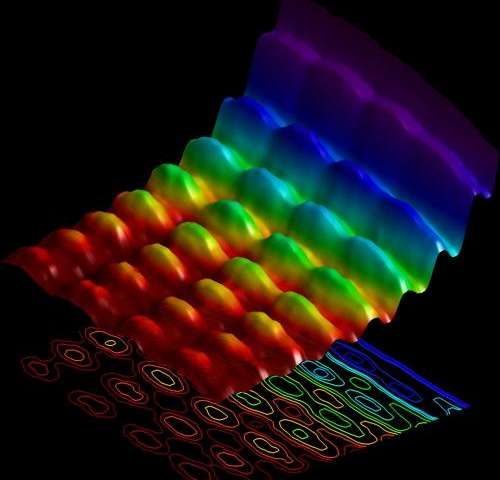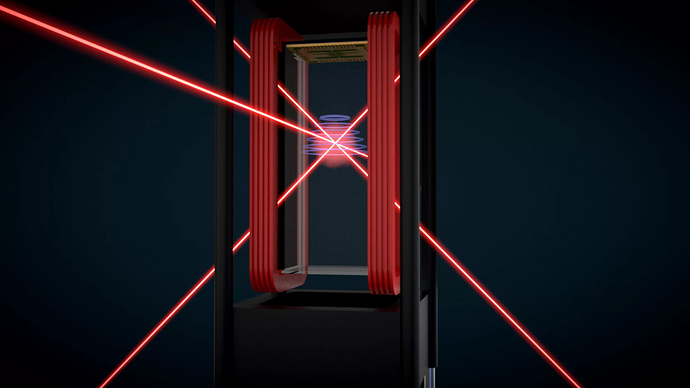Is the world around us real or are we living in a simulation, like characters trapped inside some infinitely complex video game?
That sounds like a question you might hear at a midnight screening of ‘The Matrix’ but lately it’s become the subject of serious academic debate. High-profile proponents of what’s known as the “simulation hypothesis” include SpaceX chief Elon Musk, who recently expounded on the idea.
Could we be living in The Matrix?
“If you assume any rate of improvement at all, games will eventually be indistinguishable from reality,” Musk said before concluding, “We’re most likely in a simulation.” Astrophysicist Neil deGrasse Tyson agrees, giving “better than 50-50 odds” that the simulation hypothesis is correct.”
Nick Bostrom and the Simulation Hypothesis
The current assault on reality began with a 2003 paper by Nick Bostrom. In it, the University of Oxford philosopher laid down some blunt logic: If there are long-lived technological civilizations in the universe, and if they run computer simulations, there must be a huge number of simulated realities complete with artificial-intelligence inhabitants who may have no idea they’re living inside a game inhabitants like us, perhaps.
These beings might imagine themselves real but would have no physical form, existing only within the simulation.
If computer-loving aliens really exist, Bostrum argued, “we are almost certainly living in a computer simulation.”
Looking for Gaps in the Simulation
Any such bugs in our Matrix world would have to be extremely subtle, or else we would have noticed them by now. Silas Beane, a nuclear physicist at the University of Washington in Seattle, proposes that we may be able to ferret out previously overlooked flaws by uncovering the mathematical structure used to build our simulated reality.
He points out that scientists in his field use a lattice-like set of coordinates to simulate the behaviour of subatomic particles. Maybe the aliens (or whoever built our simulation, if it exists) used that approach, too. If our reality is built on top of a lattice, there’d be a fundamental coarseness to it, since there could be no details in our mock-universe smaller than the resolution of the simulation.
Even if the resolution limit is too small for us to observe directly, Beane says, we may be able to detect it experimentally. In a paper he wrote with two colleagues, Beane proposes that a simulation lattice could affect the behaviour of ultra-energetic particles known as cosmic rays, affecting their orientation and maximum intensity.
Instruments like the Telescope Array, a network of 500 detectors scattered across 300 square miles of Utah desert, watch for cosmic rays as they crash into Earth’s atmosphere from deep space. The detectors have already discovered particles as much as 100 quintillion times as energetic as visible light. That seems like a great place to start hunting for bugs in any simulation.
It would be a delicate task: High-energy cosmic rays are rare, and the deviations from ordinary physical effects might not be obvious. But Beane and company are encouraged that making such a measurement is feasible, at least in principle. “There always remains the possibility for the simulated to discover the simulators,” the authors write.
Testing the Theory
Another way to sleuth for glitches in the simulation is by looking inward rather than outward. In a recently proposed test, former NASA engineer Thomas Campbell and his colleagues point out that human video game designers typically maximize the efficiency of their programming by generating only the parts of the virtual world that players can see. If the creators of the simulation are similarly focused on efficiency, they may be meticulous about simulating details while we’re watching an event, but allow a looser style of simulation when they think nobody’s looking.
Following that line of thought, Campbell is focusing on subtle quantum physics experiments, where gaps in the simulation might be most obvious. He has conceived several tabletop optics arrangements that would shoot a laser beam through an elaborate sequence of slits, mirrors and detectors. Photons of laser light would follow different paths contingent on whether they are behaving like waves or like particles, which in turn depends on the structure of the setup.

Is the Universe a hologram?
In the late 1990s, theoretical physicists called Paul Sutter uncovered a remarkable connection between two seemingly unrelated concepts in theoretical physics. That connection is almost inscrutable technical, but it might have far-reaching consequences for our understanding of gravity and even the universe.
The holographic principle states that the entropy of ordinary mass (not just black holes) is also proportional to surface area and not volume; that volume itself is illusory and the universe is really a hologram which is isomorphic to the information "inscribed" on the surface of its boundary.
To illustrate this connection, we’re going to start at of all places a black hole. Researchers have found that when a single bit of information enters a black hole, its surface area increases by a very precise amount: the square of the Planck length (equal to an incredibly small 1.6 x 10^-35 meters on a side). [Are We Living in a 2D Hologram? Photos of Laser ‘Holometer’ Experiment (Gallery)]
The idea that we live in a holographic universe that uses a form of quantum "computer code" to create the physical reality is not a new idea. In the 1940s, some physicists suggested that we live in a "computer generated" universe. In the video at the end of this article, physicists James Gates talks about this form of computer code, which he refers to as "adinkras".
Whatever the truth may be, our experience of everyday reality is real enough to us and no matter what existential philosophical conversations may bend our minds toward infinite places, we should all feel safe in the knowledge that even if the world around is maybe a simulation and that we ourselves may be simulations, we on the most part have self-awareness, consciousness and are sentient. Therefore would being a simulation really matter??







